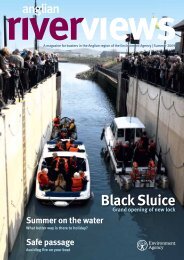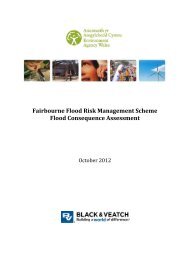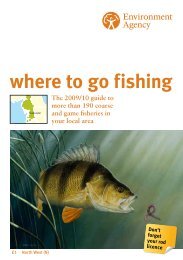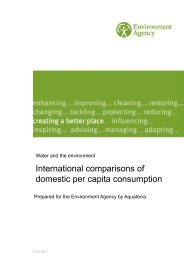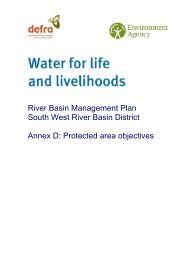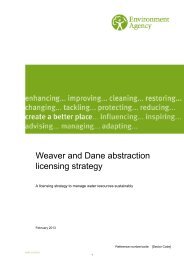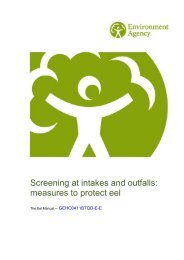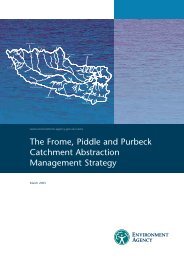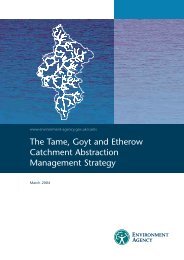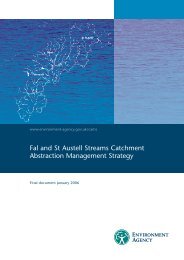Karenia mikimotoi
Karenia mikimotoi
Karenia mikimotoi
Create successful ePaper yourself
Turn your PDF publications into a flip-book with our unique Google optimized e-Paper software.
3 Toxic Phytoplankton<br />
3.1 Toxic diatoms and dinoflagellates causing<br />
shellfish poisoning<br />
Various species of the diatom Pseudonitzschia produce the toxin domoic acid that is<br />
the cause of amnesic shellfish poisoning (ASP). Certain species of the dinoflagellate<br />
genus Alexandrium, e.g. A. minutum and A. tamarense, produce various toxins<br />
belonging to the saxitoxin group that are the cause of paralytic shellfish poisoning<br />
(PSP), as does Gymnodinium catenatum, and the dinoflagellates Dinophysis<br />
acuminate, acuta and norvegica produce toxins in the okadaic acid group, that are<br />
responsible for diarrhetic shellfish poisoning (van Egmond et al., 2004; Leftley and<br />
Hannah, 2008). The shellfish that feed on these algae concentrate the toxins in their<br />
tissues and because they filter large volumes of water, e.g. mussels may filter several<br />
litres per hour, the algae do not need to be present in high concentrations. For<br />
example, one to two hundred cells per litre of toxic Alexandrium may be sufficient to<br />
engender toxicity in the shellfish sufficient to cause poisoning if eaten (Townsend et al.,<br />
2001 and refs. therein) and blooms of Alexandrium and Dinophysis do not approach<br />
the densities of ‘nuisance algae’ blooms such as Phaeocystis spp. - see notes to Table<br />
6.<br />
The WHO guidelines (Anon., 2003) note the absence of evidence of adverse effects<br />
due to ingestion of seawater containing seawater containing species of algae<br />
responsible for ASP, PSP and DSP as well as those responsible for neurotoxic<br />
shellfish poisoning (NSP). This is discussed further in sect. 4. It was also noted also<br />
that there is little information on adverse effects of dermal contact with marine waters<br />
containing these groups of toxic algae and no incidents appear to have been reported<br />
in the scientific literature since 2003.<br />
3.2 Prorocentrum lima<br />
The epibenthic and epiphytic dinoflagellate Prorocentrum lima is widely distributed in<br />
coastal seas and estuaries in both temperate and tropical regions around the world and<br />
is common in UK waters. It produces diarrhetic shellfish poisoning (DSP) toxins,<br />
primarily okadaic acid and dinophysistoxin-1 (Quilliam, 2004 and refs. therein) and also<br />
the toxic macrolide prorocentrolide (Leftley and Hannah, 2008).<br />
P. lima has been found associated with seaweed and seagrass in Fleet Lagoon,<br />
Dorset. This is a coastal area where shellfishery closures have occasionally been<br />
enforced due to elevated levels of DSP toxins in shellfish (Foden et al., 2005) and P.<br />
lima is probably the cause. (See also notes (5) and (6) in Table 6).<br />
Although normally epiphytic or epibenthic in habit, planktonic blooms of P. lima have<br />
been described, for example in locations in the W Adriatic (Ingarao et al., 2007)<br />
reaching densities of ca. 4.7 x 10 5 cells.L -1 .<br />
There is no evidence from the literature that. P. lima is a danger to human health other<br />
than due to consumption of DSP toxins via shellfish vectors. One of the authors of this<br />
report (JWL) can add this anecdotal evidence: He has cultured hundreds of litres of<br />
DSP toxic Prorocentrum lima as part of experiments to toxify shellfish. He has been<br />
exposed to cultures for many hours and has even immersed his hands in dense<br />
cultures and can report no short-term ill-effects.<br />
12 A Literature review of the potential health effects of marine microalgae and macroalgae



